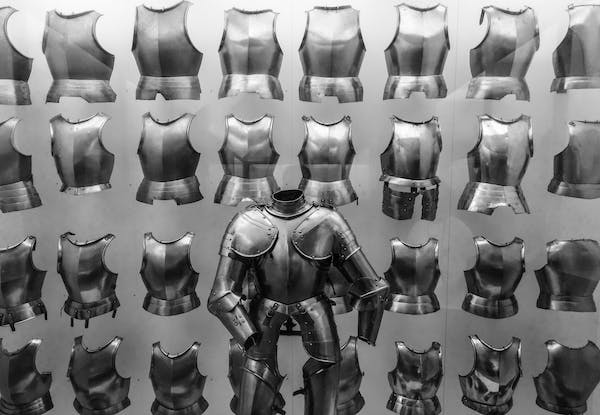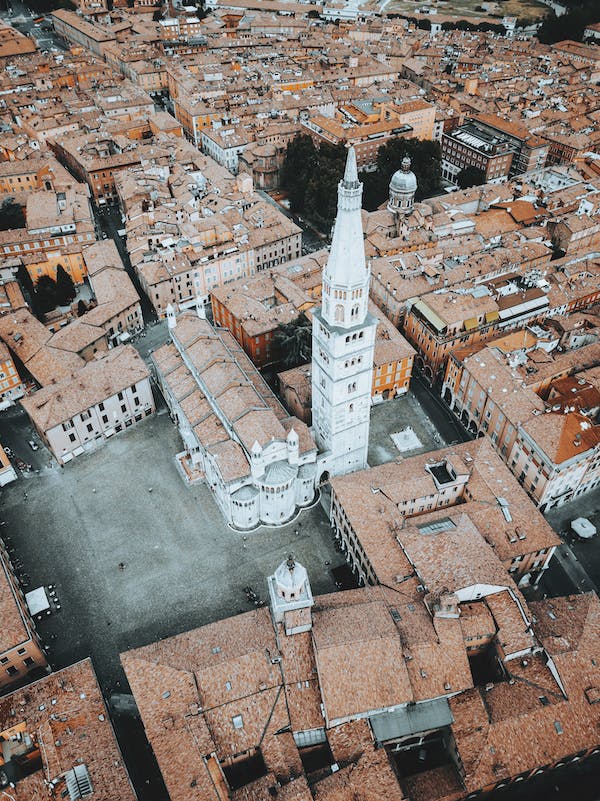The Middle Ages Inventions and Young Scientists Today

How The Top 10 middle ages inventions Have Influenced Young Scientists Today?
Without cellphones or sophisticated technology, creative minds looked for novel answers to problems that arise on a daily basis. These medieval inventors made revolutionary contributions to both agriculture and medicine, affecting the course of history in both fields.
Take a historical tour with us as we examine how the top ten innovations from the middle centuries still serve as sources of inspiration and influence for aspiring scientists today. Get ready to be astounded by the creativity that drove human progress throughout this historic era!
The Value of Innovations in the Medieval Ages
Inventions were essential in forming civilization and advancing development during the Middle Ages. These inventions were the result of people trying to find solutions for the different problems they encountered on a daily basis. The foundation for contemporary science and technology was laid by these inventions, which included breakthroughs in the fields of agriculture and medicine.
The fact that these inventions completely changed how people lived and worked is one of the main reasons why they were so significant at the time. For instance, communication and education were significantly impacted by Johannes Gutenberg’s development of the printing press. It fueled an intellectual revolution that would influence coming generations by making literature more accessible to a larger audience.
The influence of inventions in the Middle Ages on trade and business was equally noteworthy. Farmers were able to boost their production with greater ease when windmills were invented because they revolutionized the way energy was used to pump water and process crops. Communities saw affluence and economic expansion as a result of this.
These inventions also set the stage for developments in engineering and architecture. The growth of Gothic architecture made it possible for architects to create soaring cathedrals with incredibly detailed interiors that astound us even now. Similar to this, developments in mechanical engineering produced amazing achievements like siege engines that were employed in combat.
It’s critical to acknowledge these technologies’ significance as well as their enduring influence in the modern world. Young scientists are still using and refining many of the ideas from this era as they push the frontiers of scientific study.
The Middle Ages saw important inventions that helped to create the modern world we live in. They revolutionized a number of industries, including engineering, architecture, medicine, and agriculture. We may see how far we have come and honor those who came before us by realizing their significance and their impact on contemporary science and technology.”
Top 10 Medieval Ages Inventions
There was a significant deal of invention and creativity during the Middle Ages. Numerous breakthroughs that continue to influence our lives now were accomplished during this time. In actuality, this period saw the creation of some of the most significant inventions in history.
The printing press is one such technology that completely changed the manner that knowledge was disseminated. Books had to be manually duplicated before they were created, which made them scarce and costly. All of that was altered by the printing press, which made it possible to produce books in large quantities, sparking a surge in reading and knowledge.
The compass is another important invention from the Middle Ages. Sailors were able to maneuver more accurately and precisely than ever before because to this straightforward technology. It was essential to the development of global trade networks and the discovery of new areas.
Gunpowder is perhaps one of the most famous innovations from this era. Gunpowder was first employed as medication or for fireworks displays, but it finally made its way into battlefields as a weapon of mass destruction. When it was introduced, military strategy and combat were permanently altered.
Another inventive invention from this era with broad implications is the stirrup. It gave fighters the stability and support they needed to fight more successfully while mounted, a benefit that would influence conflicts for generations to come.
Other noteworthy inventions include papermaking techniques, water mills for grinding grain, clocks that brought about standardized timekeeping, windmills that utilized natural energy sources for a variety of tasks, eyeglasses that significantly improved vision for those who needed them, and mechanical clocks that run on weights or springs instead of water flows or candle drips.
Every one of these innovations made a substantial contribution to society in its day and still has an impact on upcoming scientists. Modern science has surely been impacted by these breakthroughs, whether they have come from the advancement of technology or from bettering everyday tasks like reading or precisely keeping track of time!
Effects on Contemporary Science and Technology
It is impossible to overestimate the influence of the top ten innovations from the Middle Ages on contemporary science and technology. These ground-breaking discoveries established the groundwork for several modern scientific theories.
The printing press is one such technology that transformed communication by increasing book accessibility for a larger readership. This innovation cleared the path for other publishing innovations, which in turn gave rise to the development of periodicals, newspapers, and finally the internet.
The compass is another important invention from this era. It made it possible for sailors to navigate precisely by employing magnetic forces, which created new trade routes and prospects for exploration. Similar ideas are still used by GPS devices today to direct us through daily life.
Gunpowder was perhaps one of the most significant innovations. Although it was first employed as a weapon in medieval warfare, its discovery led to advancements in explosives and chemistry that changed not just contemporary combat but also other sectors like mining and building.
Another noteworthy invention is the astrolabe. Astronomers were able to study stars and planets with unprecedented accuracy because to its use in celestial navigation. This device was essential in expanding our knowledge of astronomy.
Eyeglasses, which helped correct vision, windmills for energy harvesting, mechanical clocks for accurate timekeeping, water mills for powering various machinery, papermaking techniques that revolutionized writing materials, and metallurgical advancements that improved armor-making techniques are some other noteworthy inventions.
All of these innovations had an impact on aspiring scientists by igniting their interest in the workings of the world and offering useful information that could be used immediately or expanded upon via more research. They stimulated technical achievements in a variety of sectors and fostered an atmosphere that was favorable to scientific research.
Middle Ages Inventions
These innovations from the Middle Ages continue to influence modern society by acting as stepping stones for advancements in science and technology. They serve as a reminder of humanity’s fundamental curiosity, which drives us to explore, solve problems, and push boundaries.
Developments in Agriculture and Medicine
The development of civilization throughout the Middle Ages depended heavily on advances in agriculture and medicine. Both doctors and farmers put up endless effort to create novel methods and treatments that had a long-lasting effect on their respective professions.
One important invention in agriculture was the three-field system. To preserve soil fertility, this strategy included splitting the land into three sections and rotating crops annually. Farmers might naturally restore nutrients and raise harvests by leaving one field fallow. This approach guaranteed sustained food production while revolutionizing farming techniques.
A significant advancement in agriculture was the introduction of plows pulled by horses. Compared to conventional hand-held implements, these robust equipment allowed farmers to plow wider amounts of ground more effectively. This development allowed farmers to grow more crops, which raised output and enhanced livelihoods.
In the field of medicine, progress has been achieved in comprehending the human structure and creating remedies for many illnesses. A noteworthy innovation was the use of natural treatments as pharmaceuticals. Many plants, including sage, lavender, chamomile, and many more, were employed for their therapeutic qualities. Different plants were tried and tested by doctors to cure a variety of conditions, from fevers to digestive problems.
Additionally, throughout this time period, advancements were made in surgical methods. Surgeons created novel techniques that lessened discomfort and enhanced patient outcomes for wound care and amputation operations. The Middle Ages saw significant advances in both agriculture and medicine, which set the groundwork for contemporary methods being employed by experts worldwide! Our grasp of farming practices and life-saving medical procedures has been molded by the knowledge acquired throughout this period!

Impact on Engineering and Architecture
The Middle Ages Inventions had a significant impact on both engineering and architecture. The flying buttress was one such invention that had a big influence on architecture. This architectural element gave the walls more support, which permitted the construction of larger, more opulent structures.
The use of pointed arches in Gothic architecture was another significant innovation. Larger windows and higher ceilings were made possible by the more uniform weight distribution provided by these arches in addition to their aesthetic value. During this time, this invention completely changed the architecture of buildings.
One significant engineering invention was the water wheel. Natural energy sources, such rivers or streams, might be harnessed by using water wheels to power a variety of devices, including mills and pumps. This development significantly increased production and efficiency in sectors like industry and agriculture. During this time, the advancement of cranes was also very important to building undertakings. Tall cathedrals and castles could be built because cranes made it easy to carry large, heavy materials.
These Middle Ages Inventions still have an impact on contemporary engineering and architecture. The ideas behind cranes, pointed arches, flying buttresses, and water wheels have influenced how we think about structural stability and effective use of resources.
Modern skyscrapers, with their complex support structures and sustainable design concepts derived from medieval inventions, are a clear example of this continuing heritage. Taking a closer look at these examples of Middle Ages Inventions serves as a reminder that historical insights continue to influence science and technology developments today.
